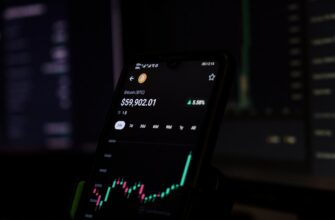- The XRP and SWIFT Rumors: What You Need to Know
- Understanding the Players: SWIFT vs. Ripple
- Why the “Announcement” Speculation Matters
- Technical Advantages of XRP in Cross-Border Payments
- Regulatory Hurdles and Market Realities
- Future Outlook: Collaboration or Competition?
- FAQ: XRP and SWIFT Announcement Questions
- The Bottom Line
The XRP and SWIFT Rumors: What You Need to Know
Recent buzz about a potential “XRP SWIFT announcement” has ignited speculation in the crypto and banking sectors. While no formal partnership exists between Ripple (creator of XRP) and SWIFT, industry shifts suggest a collision course in cross-border payments. SWIFT’s legacy network handles $5 trillion daily but suffers from slow speeds and high fees. Meanwhile, Ripple’s blockchain solutions using XRP enable 3-second settlements at minimal cost. This article explores the implications of their technological rivalry and why whispers of collaboration persist.
Understanding the Players: SWIFT vs. Ripple
SWIFT’s Dominance: Founded in 1973, SWIFT connects 11,000+ banks via a messaging system. Transactions take 1-5 days with multiple intermediaries, costing $25-$50 per transfer. Its GPI initiative improved tracking but didn’t solve core inefficiencies.
Ripple’s Disruption: RippleNet leverages blockchain and XRP cryptocurrency for real-time settlements. Key products include:
- xCurrent: Bank-to-bank messaging (no XRP)
- xRapid: Uses XRP as a bridge currency for liquidity
- ODL: On-Demand Liquidity for instant currency conversion
Why the “Announcement” Speculation Matters
Though no joint statement exists, three developments fuel rumors:
- SWIFT’s 2023 exploration of blockchain interoperability
- Ripple’s expanding bank partnerships (e.g., Santander, SBI Remit)
- SWIFT’s CBDC experiments mirroring Ripple’s tech
Market analysts note that SWIFT adopting XRP could slash global payment friction, potentially increasing XRP’s utility and value.
Technical Advantages of XRP in Cross-Border Payments
XRP offers transformative benefits:
- Speed: Settlements in 3-5 seconds vs. days
- Cost: Fees under $0.01 per transaction
- Scalability: Handles 1,500 TPS (SWIFT: ~50 TPS)
- Liquidity: Eliminates nostro accounts via XRP bridges
Banks using ODL reported 40-70% cost reductions, highlighting XRP’s real-world impact.
Regulatory Hurdles and Market Realities
Key obstacles remain:
- Ongoing SEC lawsuit against Ripple (expected resolution: 2024)
- SWIFT’s entrenched institutional relationships
- Central bank digital currency (CBDC) competition
Despite challenges, 75% of finance executives in a 2023 Deloitte survey see blockchain as critical for payments within 5 years.
Future Outlook: Collaboration or Competition?
Potential scenarios include:
- Direct Integration: SWIFT incorporates XRP for liquidity (unlikely short-term)
- Coexistence: Ripple captures emerging markets; SWIFT serves traditional corridors
- Tech Adoption: SWIFT develops XRP-like solutions without the token
Ripple’s CEO Brad Garlinghouse has publicly critiqued SWIFT’s inefficiencies, suggesting competition will drive change regardless of partnership.
FAQ: XRP and SWIFT Announcement Questions
Q: Was there an official XRP and SWIFT partnership announcement?
A> No. Rumors stem from industry speculation about payment disruption, not a verified collaboration.
Q: How does XRP improve upon SWIFT?
A> XRP enables near-instant, low-cost settlements using blockchain, bypassing SWIFT’s multi-day intermediary chains.
Q: Are banks using XRP with SWIFT?
A> Banks use RippleNet independently of SWIFT. Notable adopters include Bank of America and PNC.
Q: Could SWIFT adopt XRP in the future?
A> Possible but unlikely soon due to regulatory uncertainty and SWIFT’s parallel blockchain projects.
Q: What’s Ripple’s response to SWIFT competition?
A> Ripple positions itself as a complementary solution, noting 90% of RippleNet users weren’t SWIFT customers.
The Bottom Line
While a formal “XRP SWIFT announcement” remains speculative, the convergence of traditional finance and blockchain is undeniable. Ripple’s technology—powered by XRP—demonstrates clear advantages in speed, cost, and scalability over legacy systems. As global payment demands evolve, expect continued disruption whether through competition, adaptation, or unforeseen collaboration. Financial institutions ignoring this shift risk obsolescence in the $250 trillion cross-border payment market.








